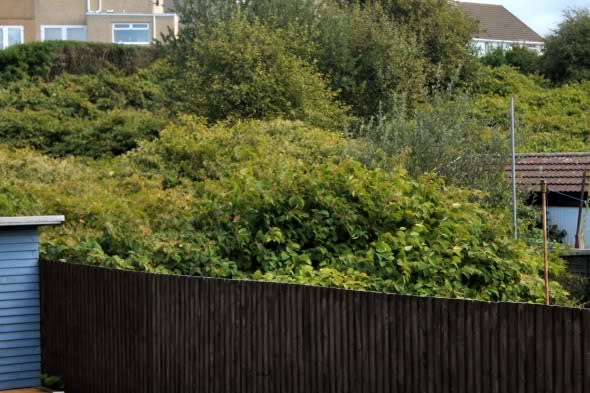Japanese knotweed invasion destroys half property's value

Elizabeth Abraham, a 91-year-old from Swansea, has lived in the same property for her whole life. As she moved into a care home, she hoped the value of her house would help pay for her care in her older years.
However, she was in for a horrible shock: the plant that was taking over the bottom of the garden turned out to be Japanese Knotweed, which slashed the value of the house almost in half.
The discovery was made by her great niece Elizabeth Wakeman, who was in charge of selling the property on Carmarthern Road, to pay for a care home. She told the South West Evening Post that the estate agent had explained that having the weed at the bottom of the garden had reduced the value of the house from £80,000 to £45,000.
Article continues below

What is it?
The reason why it makes such an extraordinary difference is because of the nature of the plant. It was introduced into the UK by the Victorians, who had no idea just how invasive it was. It is described by the Environment Agency as lush green in colour with shovel shaped leaves and a stem that looks like bamboo. It also produces white flowers in autumn and grows rapidly, up to 10cm a day in the summer.
The real problem is that it is powerful enough to grow through solid strictures, including the foundations and floors of houses. Once the knotweed is in a property, it can undermine the integrity of the structure, and in some cases the property itself may have to be demolished.
And the knotweed doesn't have to be particularly big or near the property to make a difference. If it is discovered in the vicinity, many lenders will not lend on the property, making it very difficult to sell.
%VIRTUAL-ArticleSidebar-mortgages%
Some people may be tempted to cut it down and hope it isn't spotted. However, there is a question in the seller's pack which specifically asks about it, and if you lie, when the plants reappears, you may still be liable.
The Daily Mail reported that in Abraham's case, the weed hasn't reached the property. However, she has a very different problem. The weed had spread into her garden from a strip of land at the bottom - which turned out to be unregistered - which makes it impossible to trace the owners to deal with the weed on their land. It means that even if she got rid of the knotweed on her land (which requires specialist treatment and can take anything up to four years), it wouldn't solve the problem, because more would just grow over from the bottom of the garden again.
What can you do?
In many cases it's worth getting specialist help if you discover knotweed. There are two ways to get rid of it. The first is to dig it up and take to away - along with the soil - and it's best to use a specialist for that because they'll know what they are doing. The problem with this approach is that the roots are so deep that it commonly comes back, so you could require more services over the years, and you cannot be sure to eradicate it even then.
The second approach is to use weedkiller. Again a professional is the best bet, because the chemicals they can use are stronger, and they should be able to destroy the plant within two years - with two applications a year. If you do it yourself with commercial weedkillers it could take up to four years.
Homeowner nightmares on AOL Money
Forced to bulldoze home by weed
The 10 worst nightmares for homeowners
Wasp apocalypse: 5,000 move into spare room



